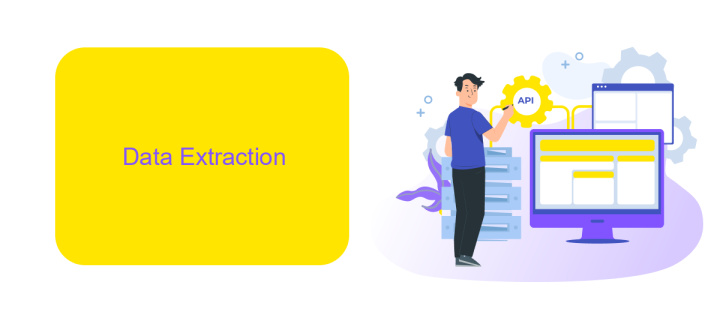ETL Large Data Sets
Extract, Transform, Load (ETL) processes are crucial for managing large data sets, enabling organizations to convert raw data into actionable insights. As data volumes continue to grow exponentially, efficient ETL strategies become paramount. This article explores the best practices, tools, and techniques for optimizing ETL workflows, ensuring scalability, accuracy, and performance in handling massive data sets.
Introduction
In today's data-driven world, managing and processing large data sets efficiently has become crucial for businesses. Extract, Transform, Load (ETL) processes play a pivotal role in integrating and preparing data from multiple sources for analysis. The complexity of handling vast amounts of data necessitates robust ETL solutions that can ensure data integrity, accuracy, and timeliness.
- Extract: Gathering data from various sources such as databases, APIs, and flat files.
- Transform: Converting data into a suitable format for analysis, including cleaning, enriching, and aggregating.
- Load: Inserting the processed data into a target system, such as a data warehouse or data lake.
One of the services that streamline ETL processes is ApiX-Drive, which offers seamless integration capabilities across various platforms. By automating data workflows and reducing manual intervention, ApiX-Drive enhances the efficiency and reliability of data management. This makes it an invaluable tool for businesses looking to leverage large data sets for strategic decision-making.
Data Extraction

Data extraction is the foundational step in the ETL process, involving the retrieval of data from various sources. These sources can be diverse, including databases, cloud storage, APIs, and even flat files. The goal is to gather all relevant data while ensuring its integrity and accuracy. For large data sets, this process must be efficient to handle high volumes of data without significant lag or loss. Tools like SQL queries, web scraping, and data integration platforms play a crucial role in this stage.
Effective data extraction often requires setting up robust integrations with data sources. Services like ApiX-Drive can streamline this process by providing seamless connectivity between different platforms and applications. ApiX-Drive allows users to automate data transfers, reducing manual efforts and minimizing errors. By leveraging such tools, organizations can ensure that their data extraction process is both reliable and scalable, capable of handling the demands of large data sets.
Data Transformation

Data transformation is a crucial step in the ETL process, involving the conversion of raw data into a format suitable for analysis. This step ensures that data from diverse sources is harmonized, cleaned, and structured to meet the specific requirements of the target system. Effective transformation enhances data quality and facilitates accurate insights.
- Data Cleaning: Remove duplicates, correct errors, and handle missing values to ensure data accuracy.
- Data Integration: Combine data from various sources into a cohesive dataset, ensuring consistency.
- Data Aggregation: Summarize and group data to provide meaningful insights and reduce complexity.
- Data Enrichment: Enhance data by adding relevant information from external sources.
- Data Normalization: Standardize data formats, units, and scales for uniformity.
Using tools like ApiX-Drive can streamline the data transformation process by automating integrations and ensuring seamless data flow between different systems. This service simplifies the connection of various data sources, making it easier to implement and manage complex ETL workflows. By leveraging such tools, organizations can improve efficiency and focus on deriving valuable insights from their data.
Data Loading

Loading large data sets efficiently is a critical step in the ETL process. The goal is to ensure that data is transferred from the staging area to the target system without compromising performance or data integrity. This involves choosing the right tools and strategies to handle the volume and complexity of the data.
One effective approach is to use parallel processing, which divides the data into smaller chunks and loads them concurrently. This can significantly reduce the time required for data loading. Additionally, incremental loading can be used to update only the data that has changed, rather than reloading the entire data set.
- Parallel processing for faster data loading
- Incremental loading to update only changed data
- Using cloud-based services for scalability
- Monitoring and error handling to ensure data integrity
Tools like ApiX-Drive can facilitate the integration process by providing seamless connectivity between various data sources and target systems. This not only streamlines the data loading process but also ensures that the data is accurate and up-to-date. By leveraging such tools, organizations can achieve efficient and reliable data loading, even with large data sets.
- Automate the work of an online store or landing
- Empower through integration
- Don't spend money on programmers and integrators
- Save time by automating routine tasks
Data Validation
Data validation is a crucial step in the ETL process for large data sets, ensuring that the extracted, transformed, and loaded data is accurate, complete, and reliable. This involves a series of checks and rules applied at various stages of the ETL pipeline to identify and rectify errors, inconsistencies, and anomalies. Common validation techniques include format checks, range checks, consistency checks, and uniqueness checks. These techniques help to maintain data integrity and prevent the propagation of errors throughout the system.
For seamless integration and efficient data validation, leveraging tools like ApiX-Drive can significantly enhance the process. ApiX-Drive offers robust capabilities for automating data workflows, enabling real-time validation and seamless integration with various data sources and destinations. By using such tools, organizations can streamline their ETL processes, reduce manual intervention, and ensure that only high-quality data is loaded into their systems. This not only improves data reliability but also enhances decision-making and operational efficiency.
FAQ
What is ETL, and why is it important for large data sets?
What are the main challenges in handling large data sets in ETL processes?
How can I optimize ETL processes for large data sets?
What tools can help automate and integrate ETL processes for large data sets?
How do I ensure data quality in ETL processes for large data sets?
Apix-Drive is a simple and efficient system connector that will help you automate routine tasks and optimize business processes. You can save time and money, direct these resources to more important purposes. Test ApiX-Drive and make sure that this tool will relieve your employees and after 5 minutes of settings your business will start working faster.


